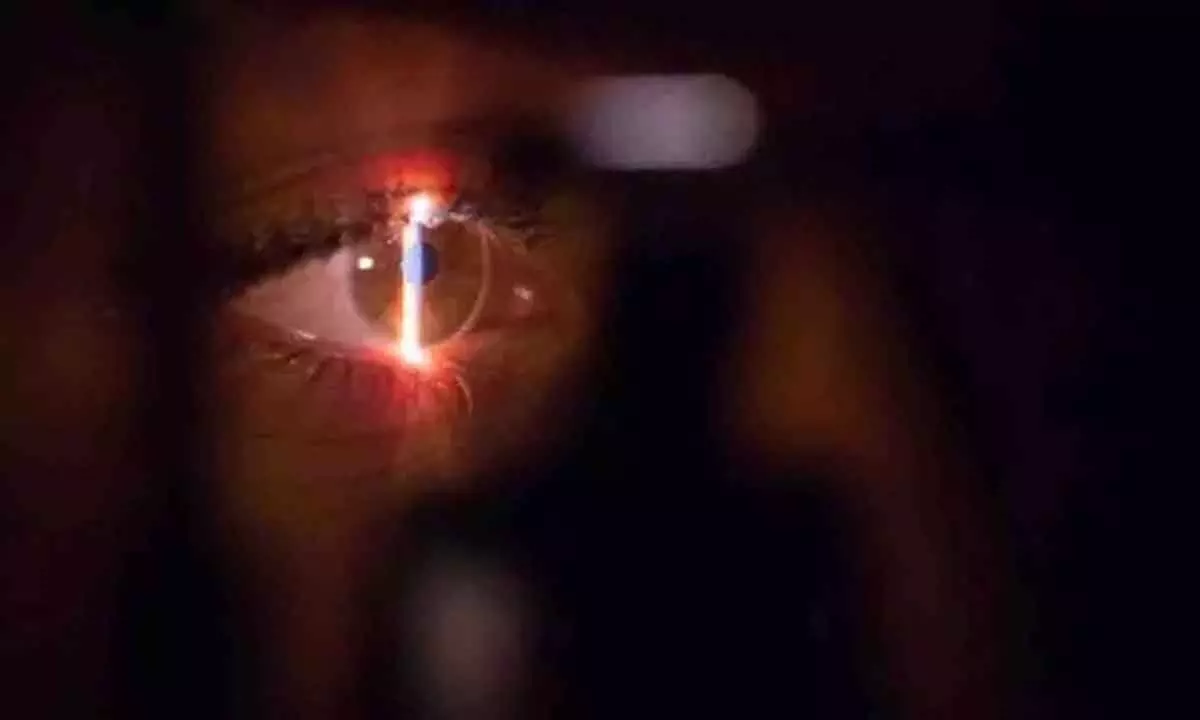Live
- They always want me to win, and now I feel lucky to have been offered a story like ‘Zebra’: Satyadev Kancharana
- ‘Democracy first, humanity first’: PM Modi in Guyana's parliament on two countries' similarities
- PKL Season 11: Telugu Titans register third straight win to top standings
- Is Pollution Contributing to Your COPD?
- NASA Unveils Underwater Robots for Exploring Jupiter's Moons
- Additional Central forces arrive in violence-hit Manipur
- AR Rahman and Saira Banu’s Divorce: Legal Insights into Common Issues in Bollywood Marriages
- 82.7 pc work completed in HPCL Rajasthan Refinery area: official
- Curfew relaxation extended in 5 Manipur districts on Friday
- Tab scam prompts Bengal govt to adopt caution over fund disbursement
Just In
Why we see colours that dogs, cats can’t


To see in full colour as we know it, humans use three cones – red, blue and green. However, cats and dogs only have blue and green cones. This means they have a much more muted perception of colour, which is akin to colour blindness in humans
New York: With human retinas grown in a petri dish, researchers have discovered how an offshoot of vitamin A generates the specialized cells that enable us to see millions of colours – an ability that dogs, cats and other mammals do not possess. The findings, published in the journal, PLOS Biology, increase understanding of colour blindness, age-related vision loss, and other diseases linked to photoreceptor cells. They also demonstrate how genes instruct the human retina to make specific color-sensing cells, a process scientists thought was controlled by thyroid hormones.
“These retinal organoids allowed us for the first time to study this very human-specific trait,” said author Robert Johnston, an associate professor of biology. “It’s a huge question about what makes us human, what makes us different.”
By tweaking the cellular properties of the organoids, the research team found that a molecule called retinoic acid determines whether a cone will specialize in sensing red or green light. Only humans with normal vision and closely related primates develop the red sensor.
The team found that high levels of retinoic acid in early development of the organoids correlated with higher ratios of green cones. Similarly, low levels of the acid changed the retina’s genetic instructions and generated red cones later in development.
“There still might be some randomness to it, but our big finding is that you make retinoic acid early in development,” Johnston said. “This timing really matters for learning and understanding how these cone cells are made.” Green and red cone cells are remarkably similar except for a protein called opsin, which detects light and tells the brain what colors people see.
“Because we can control in organoids the population of green and red cells, we can kind of push the pool to be more green or more red,” said author Sarah Hadyniak, who conducted the research as a doctoral student in Johnston’s lab and is now at Duke University.
Scientists still don’t fully understand how the ratio of green and red cones can vary so greatly without affecting someone’s vision. If these types of cells determined the length of a human arm, the different ratios would produce “amazingly different” arm lengths, Johnston said.
To build understanding of diseases like macular degeneration, the researchers are working with other Johns Hopkins labs. The goal is to deepen their understanding of how cones and other cells link to the nervous system.
To see in full colour as we know it, humans use three cones – red, blue and green. However, cats and dogs only have blue and green cones. This means they have a much more muted perception of colour, which is akin to colour blindness in humans.
A myth is that cats and dogs can see in the pitch dark. Cats and dogs have evolved to be superbly designed for night-time hunting. Their eyes have a high density of rods, which are the cells that are sensitive to dim light. This means they can see normally with as little as 15% of light that humans would need. Also, their pupils function much as the aperture for a camera does, dilating significantly when they need to take in extra light. Cats in particular have exceptionally large pupils for their body size and outstanding night-time vision. However, it’s a myth that cats and dogs can see in the pitch dark. Like all animals, some light is required for the eye to function properly.

© 2024 Hyderabad Media House Limited/The Hans India. All rights reserved. Powered by hocalwire.com






